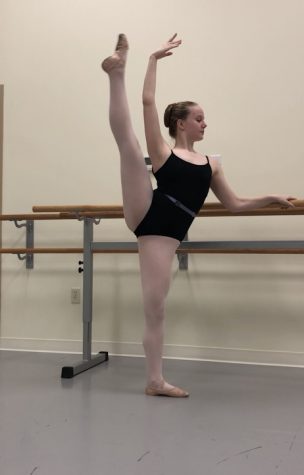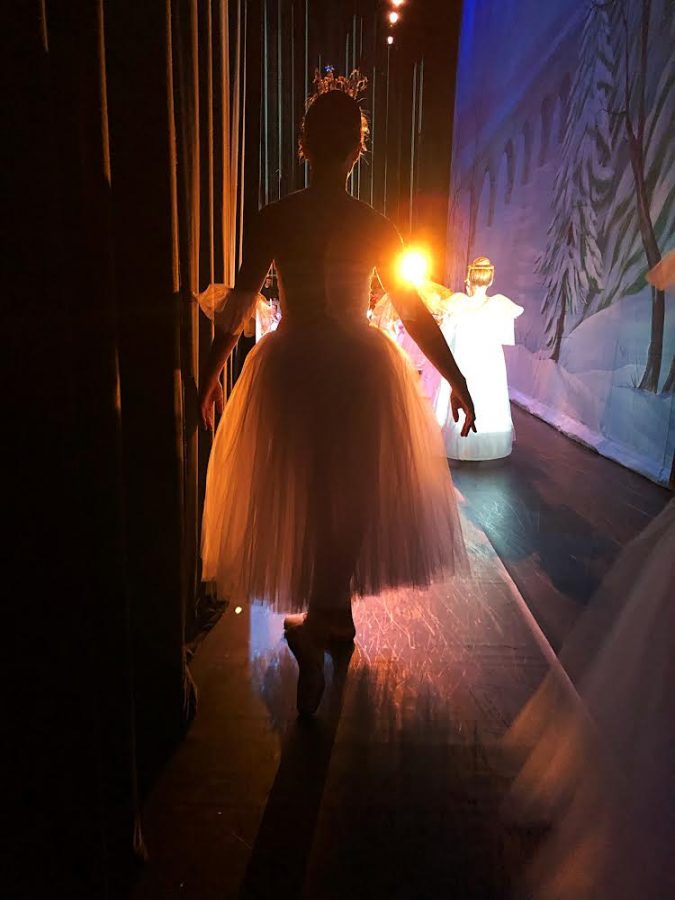Ballet: The beautiful and the ugly
January 11, 2022
Ballet is an art form filled with turns and leaps that really connect a performance together. But ballet is more than just turning, there is a lot more strength and rehearsal that goes into one dance. People don’t know how much work the art form involves. People also don’t know how much mind power and energy it needs. That brings the questions: how hard is this art on the mind and body? How hard is it on beginner dancers aspiring to create this art with themselves? People believe it’s all beauty but underneath is strength and scars.
Ballet is a sport that is usually started when a person is very young. Dance in general is a very common activity for young little girls or boys to start. All the people I interviewed started the sport young. The youngest of the people I interviewed was three years old while the oldest was 9 years old. Most of the time it never really becomes a serious activity, until it is. When you’re young you don’t know how many hours the dance involves when you’re older. You don’t know what your body will go through if you stick with it or what your mental health will go through. Ballet isn’t the first activity to come to people’s mind when you think of a strenuous sport for the mind or body.
Around the age you hit puberty, ballet turns from a couple hours a week to an intense learning experience. Former Lakeville South student Olivia Boyd said that before she ended her ballet career at the age of 17, she was dancing almost over 20 hours a week. She said how it “took as many hours as a part time job.” Boyd also said how when you get older and more into the art form, you don’t have any time for anything else. Lakeville North freshman Ellie A says that she dances “between 12 and 15 hours a week” (depending on rehearsal schedule for performances) at the age of 14. Ballet is a career that requires so much of the body that being in your thirties is old for dancers. That’s one of the reasons why the training becomes so intense because you become a professional when you’re 20. Lakeville South Junior, Bella O’brien, states how a hard part about the art is “how physically and mentally demanding it is.” She says how people don’t really know “how difficult ballet actually is.” When you are training to become a professional, it needs more hours than just after school time. Aspiring dancers sometimes make the choice to do homeschool, online school, or half online and half in person school. Ballet takes a lot more than just hours in the studio though, you need to really be able to understand and perform.
Ballet takes a lot more thinking and mental power than people realize. During training you have to be able to form muscle memory to be able to perform the steps. Each step requires certain muscles working together so you perform with elegance and grace. Even with simple steps that a dancer already has learned, they still have to think about it so they won’t hurt themselves in the end. Former Lakeville South student and Ballerina, Morgan Duvall, describes ballet as a “complex and developed art form.”
Duvall says that ballet requires “an insane amount of dedication, athleticism, artistry, and resilience.” To get another opinion on the sport I asked former ballerina and Lakeville south senior, Vanessa Fabry. Fabry says how in ballet “ you have to pay attention to every muscle and body placement, and it takes years to learn the basics.” She also says that the sport is “ physically and mentally demanding” and how “you have to be very cautious on pointe shoes because you could easily twist an ankle.”
To take a deeper look into the mental health impacts of the sport I asked each person (if they were comfortable to answer) how ballet affects their mental health. Overall the most common hardships on their mental health was the idea to be perfect. Although, Everyone had their own ideas how mental health for dancers was impacted negatively or positively. Vannesa Fabry says how there was frustration from the sport some days. She thought she “ wasn’t flexible or strong enough to execute the certain movements well.” Bella O’brien says how a big deal for ballerinas was being compared to dancers. Morgan Duvall says how even though the sport was a great stress reliever, the expectations with ballet have caused “profound anxiety, body image issues, and lowered self conscious.” She states how these things are still with her today. Olivia Boyd had a combination of it all. Boyd states how the sport and the teaching she had, combined with the rest of her stress from life, caused her clinical depression, anxiety, and body dysmorphia. The teachings she received were so stressful and sometimes so negative that it caused a negative impact on her mental health. Boyd, a beautiful dancer, wasn’t seen as that to her former teachers. In an art form with the thoughts that all dancers were (or should be) tiny, she got to a point where she and others didn’t appreciate her body. Everyone has their opinion of and their own experience from dance, but some have it harder than others. There are always positives and many were stated but there are parts (depending on the teacher) that have an underlying toxicity.
Each of the people I interviewed were or are beautiful dancers. They each had their own opinion and view of the art. What I have learned overall is that the toxicity really depends on the teacher you get. A big deal of it as well is the cultural background of the sport. The idea of being perfect and exactly like

other dancers can end up hurting the aspiring dancers. Sometimes there are girls who aren’t positively impacted or happy while their are those who end up getting eating disorders. They aren’t happy with who they are even though they are more graceful than most people in the world. The world today, though, is really working on improving how teachings work and are spreading the message that no matter what, you are perfect. Each year goes by and teaching changes to be more positive. Imagine how happy people would be with who they are if we would have started that sooner.


